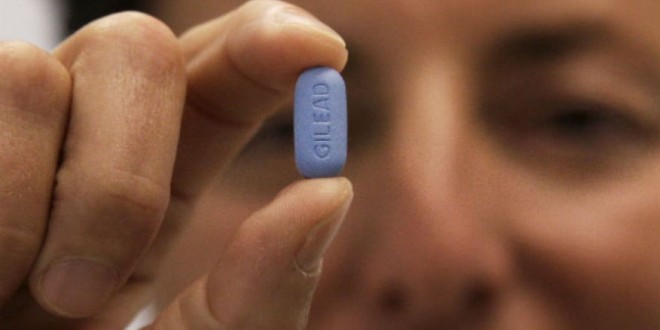Several concerns about a prescription drug used to prevent HIV infection in people at high risk are being put to rest by the results of new research. Follow-up from a landmark study that proved the drug works now shows that it does not encourage risky sex and is effective even if people skip some doses.
The drug, Truvada, was approved in the U.S. in 2012 and recommended by the Centers for Disease Control and Prevention earlier this year as a preventive measure for people who are at high risk for contracting the AIDS virus.
The research, published by the British journal Lancet Infectious Diseases, looked at 1,600 gay men and transgender women who took part in the original study showing that daily use of this pill lowered the risk of contracting HIV.
Some health officials had worried that taking Truvada may give people a false sense of security and make men less likely to use condoms or to limit their number of sexual partners. However, research showed no increase in these behaviors.
The study was done in the United States, South America, Africa and Thailand.
This year has seen some setbacks in the search for a cure. The Mississippi baby, who was given an aggressive treatment of antiretroviral therapy shortly after birth, was announced to have had a clear rebound and was back on HIV medications.
Two Boston men who received bone marrow transplants and appeared to be cured of HIV also have relapsed.
But each “setback” is actually a step forward, as researchers are coming up with ways to tackle the difficult disease. On Tuesday, a team from Temple University School of Medicine gave a report on how they developed a way to cut HIV out of the cells it infects. This is a similar approach to gene therapy.
“This is one important step on the path toward a permanent cure for AIDS,” said Dr. Kamel Khalili, chairman of the Department of Neuroscience at Temple, to NBC News. “We want to eradicate every single copy of HIV-1 from the patient. That will cure AIDS. I think this technology is the way we can do it.”
All this, and the resources put into education and decreasing transmission rates, shows that some progress has been made. The Centers for Disease Control and Prevention published a research letter in the Journal of the American Medical Association showing a decrease in HIV diagnoses in the U.S. from 2002 to 2011.
The annual HIV diagnosis rate decreased by 33.2 percent, from 22.1 per 100,000 population in 2002 to 16.1 per 100,000 in 2011. The biggest changes were among women, individuals between the ages of 35 to 44 and among people of mixed races.
However, many of the young men who were newly diagnosed were African-American.
The percentage of adults tested for HIV went up from 37 percent in 2000 to 45 percent in 2010.
Agencies/Canadajournal
 Canada Journal – News of the World Articles and videos to bring you the biggest Canadian news stories from across the country every day
Canada Journal – News of the World Articles and videos to bring you the biggest Canadian news stories from across the country every day



